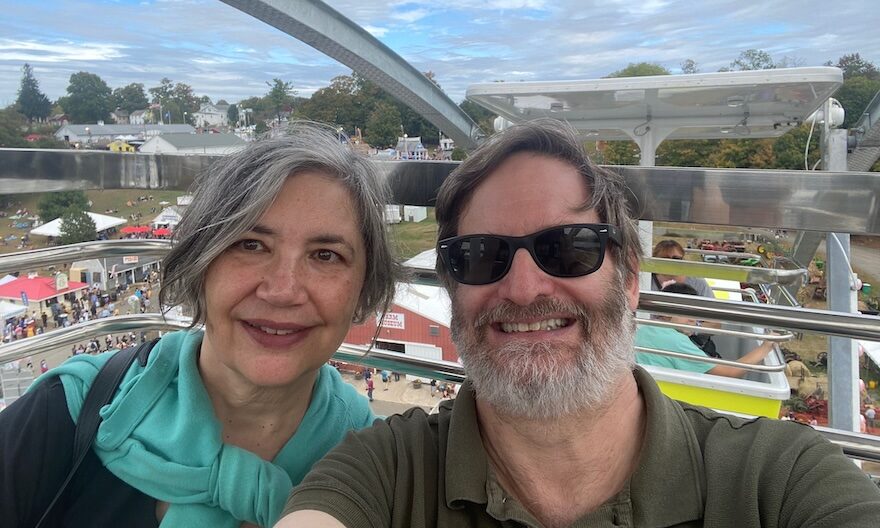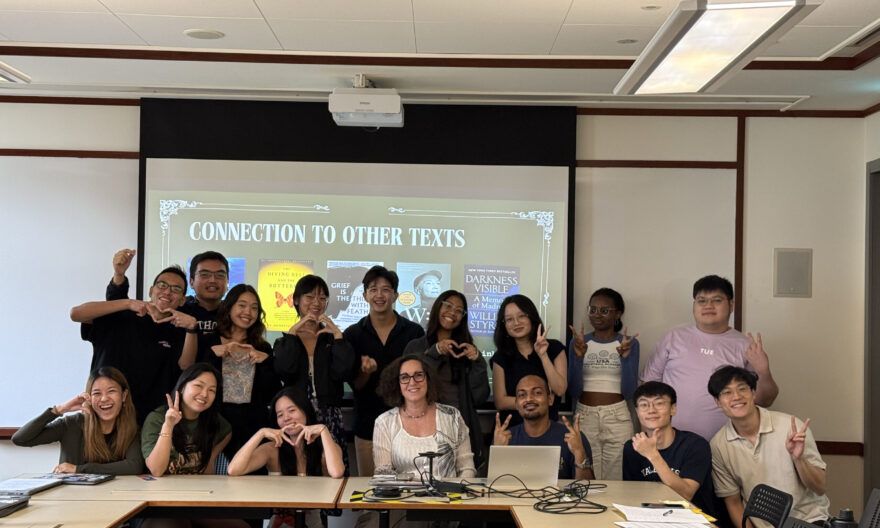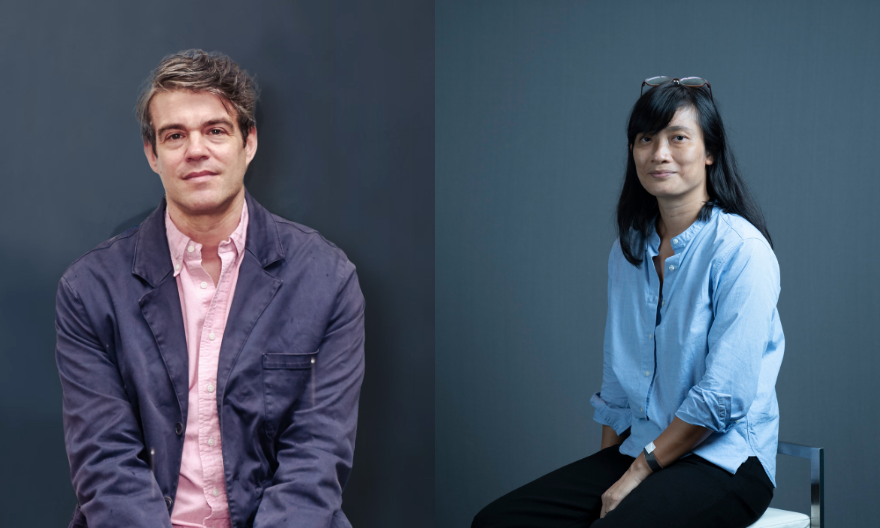Artist-in-Residence Sai Chen brings kinetic art to the Yale-NUS community and sparks new ideas through artistic interactions
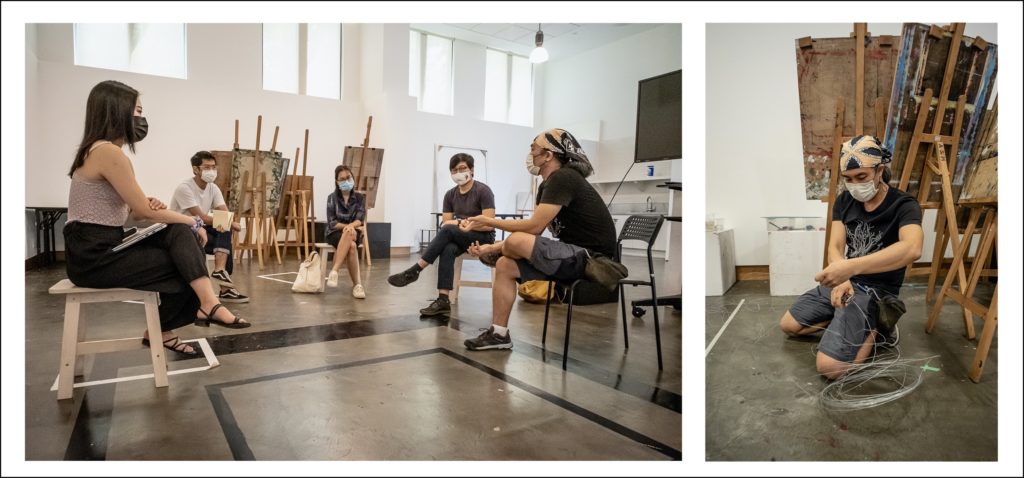 Sai Chen engaged in discussion with representatives of student groups (left) and working with materials during a class (right). Photos by Tom White.
Sai Chen engaged in discussion with representatives of student groups (left) and working with materials during a class (right). Photos by Tom White.
“What is beside me? What do I see and feel? How do I understand bodily gestures?”
Through his work, Yale-NUS College’s visiting artist Sai Chen (aka Chen Sai Hua Kuan) seeks to engage his audience with these questions.
Sai is at Yale-NUS this semester as part of the College’s Artist-in-Residence (AIR) Programme. Launched in January 2020, the Programme positions contemporary art as living practice as well as creates art that increases the understanding of China and Chinese culture. A first-of-its-kind artist residency at a liberal arts and sciences college in Asia, the Programme is supported by the Tan Chin Tuan Foundation through the Tan Chin Tuan Chinese Culture and Civilisation Programme.
During his residency, Sai has been teaching a course called Sculpting Movement. The course aims to help students develop sculpture making skills, with an emphasis on movement. Employing hands-on exercises like oscillation and gear-making, the course engages them with kinetic art in a hands-on way and also exposes them to contemporary art.
Explaining the inspiration behind the course, he said, “I love to see things that move and interact with each other, be it with nature, humans, or technology.”
Conducted without a fixed format, each class is like an improvisation session, with Sai roaming through the class as a walking dictionary, lending his advice and experience to help students develop their ideas.
This iterative teaching approach defined the learning experience for Jia Ling Wan (Class of 2023). “Even when I told Sai that I wanted to build a cabin on the school lawn, his first response was to explain to me all the processes I needed to go through to do so. This was so helpful because even though I ended up giving up on that idea (the process involved a $5000 engineer’s license), his willingness to expand on my initial idea with me helped me refine my idea into something I was excited about and still possible to accomplish,” she said.
Moreover, Sai’s approach to encouraging students to build upwards with their ideas has been particularly beneficial for students with no formal fine arts training, like Callista Yin (Class of 2023). Challenged and pushed throughout the course, she has learned how to engage and experiment with different materials and mediums, expand and build her ideas, and express an idea or message through artistic creation.
Now working on an interactive piece for her final project, Callista is creating a therapeutic audience experience. Using projections, paintings, and motion, her project will enable viewers to respond to others’ painful experiences.
For some, the course itself proved to be insightful. Jia Ling was surprised by how much she learned about herself through the course. She said, “I came in with the idea that I could make something that I found interesting but was ultimately detached from myself. These notions were torn down during every single class. Sai kept telling us to pull from deep within our personal experiences to add to our art.
A simple walk across campus that I take every day could be transformed into an ode to movement in my life through art. Through Sai’s constant encouragement, I found myself sharing a lot of my personal outlooks on life and the human experience through my artwork in a way that I didn’t even think I was capable of.”
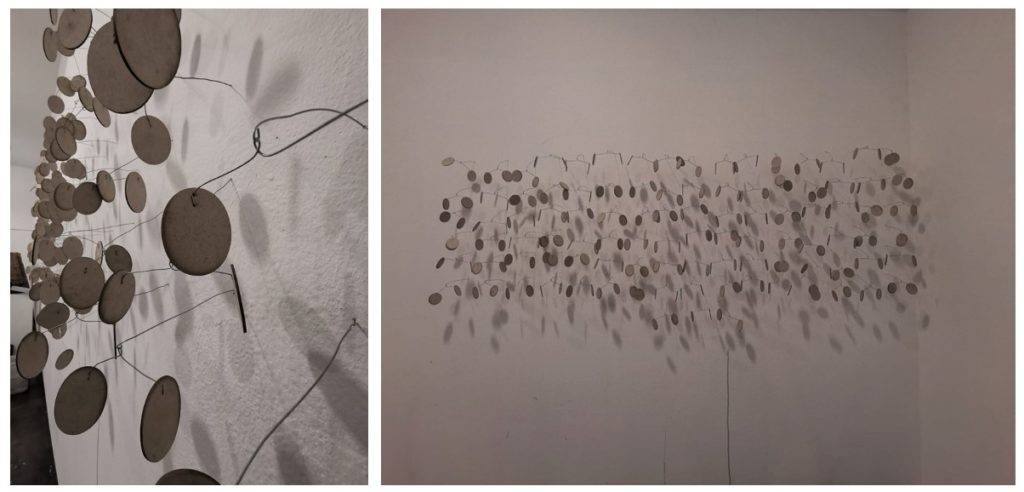 For her third assignment, Jia Ling Wan (Class of 2023) conducted a study of Calder’s hanging sculptures, or ‘mobiles’. Inspired by how he represented the four-dimensional in three dimensions, she challenged herself to push her representation to the five-dimensional, or the infinite multiverse. With multiple hanging sculptures that create shadows, she created a complex system of possibilities that are never replicated. Image provided by Jia Ling.
For her third assignment, Jia Ling Wan (Class of 2023) conducted a study of Calder’s hanging sculptures, or ‘mobiles’. Inspired by how he represented the four-dimensional in three dimensions, she challenged herself to push her representation to the five-dimensional, or the infinite multiverse. With multiple hanging sculptures that create shadows, she created a complex system of possibilities that are never replicated. Image provided by Jia Ling.
In addition to Sculpting Movement, which explores art as living practice, Sai has been creating artwork that explores Chinese culture during his residency. Inspired by his aunt who is one of the last Hainanese opera singers in Singapore, he is working on a video art project following her life and artistry to make sense of his personal identity.
Outside of teaching, Sai has been engaging the Yale-NUS community through an exhibition of his work on campus and a public lecture under the AIR programme, on 4 November to share about his works and art research. “It is very important to connect people together. When a community comes together, new ideas are sparked,” he said.
To this end, he has met with student organisations like the Visual Arts Society and the Film Society and arranged tours to his art gallery Comma Space. In addition to exploring ways for other Singapore-based practitioners to work with Yale-NUS, he will be holding a workshop on the spiral and moving image, open to the entire College community, in November.
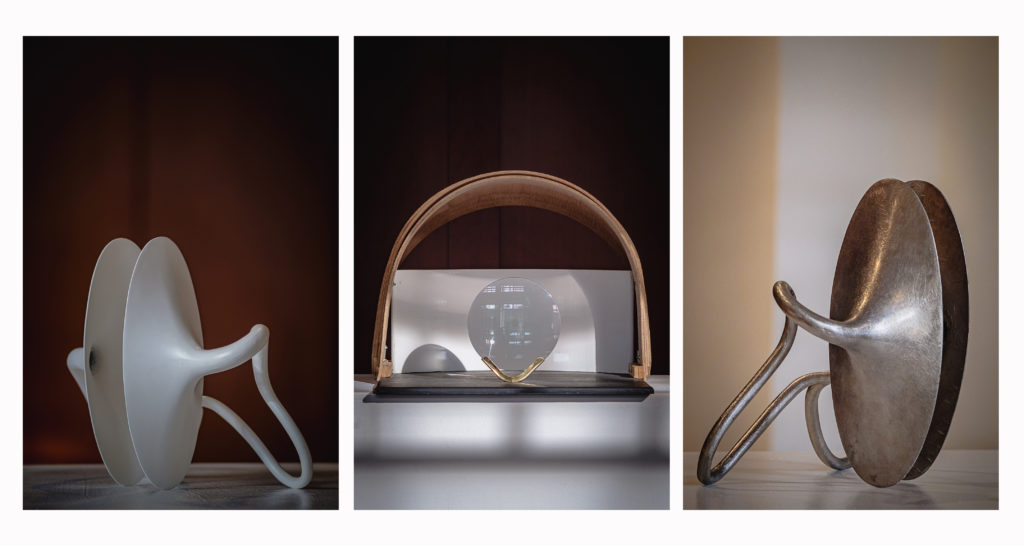 Maquettes for Sai Chen’s sculptural works on exhibition at the Yale-NUS library in October and November 2020. Photos by Tom White
Maquettes for Sai Chen’s sculptural works on exhibition at the Yale-NUS library in October and November 2020. Photos by Tom White
Reflecting on his time at the College, Sai shared that the highlight of his residency has been his interactions with students. He has found Yale-NUS students’ open way of thinking, with “no restriction or box”, very refreshing compared to traditional art institutions, where technique and style are emphasised. Ultimately, interacting with students and sharing what he knows has been his main goal as a visiting artist. He looks forward to the new ideas that such interactions will spark.

